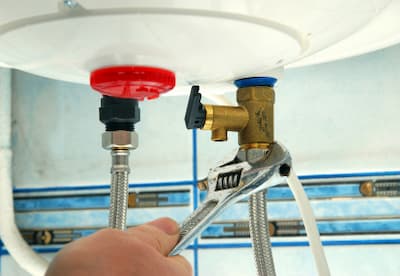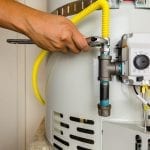Easy Guide to Maintaining Your Home's Hot Water System
Easy Guide to Maintaining Your Home's Hot Water System
Blog Article
Every person seems to have his or her own assumption about Tips For Maintaining Your Hot Water Heater.

Hot water is crucial for everyday convenience, whether it's for a refreshing shower or cleaning dishes. To ensure your warm water system runs efficiently and lasts longer, normal maintenance is crucial. This article offers functional tips and understandings on just how to maintain your home's warm water system to stay clear of disturbances and costly repair work.
Intro
Keeping your home's warm water system might appear daunting, however with a couple of easy actions, you can guarantee it operates smoothly for years to come. This overview covers every little thing from understanding your hot water system to do it yourself upkeep tips and knowing when to contact professional help.
Value of Keeping Your Warm Water System
Normal maintenance not only expands the lifespan of your hot water system however likewise guarantees it runs successfully. Neglecting maintenance can result in reduced effectiveness, greater power expenses, and even premature failing of the system.
Indicators Your Warm Water System Demands Upkeep
Recognizing when your warm water system requires focus can prevent major issues. Look out for signs such as inconsistent water temperature, unusual noises from the heater, or rusty water.
Flushing the Water Heater
Purging your hot water heater gets rid of debris accumulation, enhancing effectiveness and extending its life.
Checking and Replacing Anode Rods
Anode poles protect against deterioration inside the tank. Evaluating and changing them when worn is important.
Complex Issues Requiring Specialist Aid
Instances include major leakages, electric issues, or if your water heater is consistently underperforming.
Regular Expert Maintenance Benefits
Specialist upkeep can include comprehensive inspections, tune-ups, and making certain conformity with security standards.
Evaluating and Changing Temperature Setups
Changing the temperature setups makes sure ideal efficiency and security.
DIY Tips for Upkeep
You can do several upkeep tasks on your own to keep your warm water system in leading condition.
Looking for Leaks
On a regular basis inspect pipes and connections for leakages, as these can result in water damage and greater expenses.
Understanding Your Warm Water System
Before diving right into maintenance jobs, it's useful to recognize the fundamental components of your hot water system. Commonly, this includes the hot water heater itself, pipes, anode poles, and temperature controls.
Month-to-month Maintenance Tasks
Normal monthly checks can assist capture minor concerns before they intensify.
Testing Stress Alleviation Valves
Evaluating the stress relief valve ensures it operates correctly and stops excessive pressure accumulation.
Shielding Pipes
Protecting warm water pipes minimizes heat loss and can save energy.
When to Call a Specialist
While DIY maintenance is valuable, some issues need specialist expertise.
Final thought
Normal maintenance of your home's hot water system is necessary for efficiency, longevity, and expense savings. By adhering to these tips and understanding when to look for specialist aid, you can ensure a reputable supply of warm water without unanticipated disturbances.
How to Maintain an Instant Hot Water Heater
Before tinkering with your hot water heater, make sure that it’s not powered on. You also have to turn off the main circuit breaker and shut off the main gas line to prevent accidents. Also turn off the water valves connected to your unit to prevent water from flowing into and out of the appliance. 2. When you’re done, you have to detach the purge valves’ caps. These look like the letter “T†and are situated on either side of the water valves. Doing so will release any pressure that has accumulated inside the valves while at the same time avoid hot water from shooting out and burning your skin. 3. When the purge valves’ caps are removed, you have to connect your hosing lines to the valves. Your unit should have come with three hoses but if it didn’t, you can purchase these things from any hardware or home repair shops. You can also get them from retail stores that sell water heating systems. Read the user’s manual and follow it to complete this task properly. When the hosing lines are connected, open the purge port’s valves. 4. You should never use harsh chemical cleaners or solutions when cleaning your unit. Make use of white vinegar instead. It should be undiluted and you’ll probably use about 2 gallons. 5. Now flush your water heater. This task should probably take about 40 minutes. We can’t give you specific directions for this because the procedure is carried out depending on the type, model and brand of your heater. With that being said, refer to the user’s manual. 6. When you’re done draining the unit, you have to turn off the purge port valves again. Remove the hosing lines that you earlier installed on each of the water valves. Put the valve caps (purge port) back in their respective places and be very careful so as not to damage the rubber discs that are found inside these caps. 7. Now that everything’s back in place, check your user’s manual again to find out how to reactivate your water heating system. 8. Once it is working, turn one of your hot water faucets on just to let air pass through the heater’s water supply pipes. Leave the tap on until water flows smoothly out of it. https://www.orrplumbing.com/blog/2014/september/how-to-maintain-an-instant-hot-water-heater/

I came across that article about What Kind of Maintenance Do Water Heaters Need? while doing a lookup on the search engines. Please take the time to promote this blog if you enjoyed it. Kudos for being here. Return soon.
Call Today Report this page